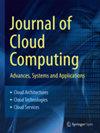Orchestration in the Cloud-to-Things compute continuum: taxonomy, survey and future directions
IF 3.7
3区 计算机科学
Q2 COMPUTER SCIENCE, INFORMATION SYSTEMS
Journal of Cloud Computing-Advances Systems and Applications
Pub Date : 2023-09-27
DOI:10.1186/s13677-023-00516-5
引用次数: 0
Abstract
Abstract IoT systems are becoming an essential part of our environment. Smart cities, smart manufacturing, augmented reality, and self-driving cars are just some examples of the wide range of domains, where the applicability of such systems have been increasing rapidly. These IoT use cases often require simultaneous access to geographically distributed arrays of sensors, heterogeneous remote, local as well as multi-cloud computational resources. This gives birth to the extended Cloud-to-Things computing paradigm. The emergence of this new paradigm raised the quintessential need to extend the orchestration requirements (i.e., the automated deployment and run-time management) of applications from the centralised cloud-only environment to the entire spectrum of resources in the Cloud-to-Things continuum. In order to cope with this requirement, in the last few years, there has been a lot of attention to the development of orchestration systems in both industry and academic environments. This paper is an attempt to gather the research conducted in the orchestration for the Cloud-to-Things continuum landscape and to propose a detailed taxonomy, which is then used to critically review the landscape of existing research work. We finally discuss the key challenges that require further attention and also present a conceptual framework based on the conducted analysis.云到物计算连续体中的编排:分类、调查和未来方向
物联网系统正在成为我们环境的重要组成部分。智能城市、智能制造、增强现实和自动驾驶汽车只是广泛领域的一些例子,这些系统的适用性正在迅速增加。这些物联网用例通常需要同时访问地理分布的传感器阵列、异构远程、本地以及多云计算资源。这就产生了扩展的云到物计算范式。这种新范式的出现提出了将应用程序的编排需求(例如,自动部署和运行时管理)从集中式云环境扩展到云到物连续体中的整个资源范围的基本需求。为了满足这一需求,在过去的几年中,业界和学术界都对编排系统的开发给予了极大的关注。本文试图收集在云到物连续体景观的编排中进行的研究,并提出一个详细的分类法,然后用于批判性地审查现有研究工作的景观。最后,我们讨论了需要进一步关注的关键挑战,并根据所进行的分析提出了一个概念框架。
本文章由计算机程序翻译,如有差异,请以英文原文为准。
求助全文
约1分钟内获得全文
求助全文
来源期刊

Journal of Cloud Computing-Advances Systems and Applications
Computer Science-Computer Networks and Communications
CiteScore
6.80
自引率
7.50%
发文量
76
审稿时长
75 days
期刊介绍:
The Journal of Cloud Computing: Advances, Systems and Applications (JoCCASA) will publish research articles on all aspects of Cloud Computing. Principally, articles will address topics that are core to Cloud Computing, focusing on the Cloud applications, the Cloud systems, and the advances that will lead to the Clouds of the future. Comprehensive review and survey articles that offer up new insights, and lay the foundations for further exploratory and experimental work, are also relevant.
 求助内容:
求助内容: 应助结果提醒方式:
应助结果提醒方式:


